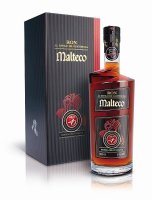Wines Sparkling wine and Champagne Trepat (1)
In the past, it was mainly festive occasions when you chose sparkling wines for consumption. But today, for wine lovers, sects are part of everyday life. It would also be a shame to keep these wines only for a few moments. Whether Prosecco, Cava, Crémant, Franciacorta or Champagne, sparkling wines create endless moments of joy. In the past, it was mainly festive occasions when you chose sparkling wines for consumption. But today, for wine lovers, sects are part of everyday… Read more
Sparkling wines
Sekt, Crémant, Cava and Champagne undergo secondary fermentation. Tirage liqueur is added to a container or bottle (traditional method) with wine in which fermentation takes place. The container or bottle is then sealed. For an idea, it can be a tank filled to the brim with wine, airtight (method charmat), or fermentation takes place in a bottle (method champenois). The longer the wines are in contact during the second fermentation, the finer the bubbles, which are often called mousseux - sparkling wine. When the time is right, the bottle is slowly transferred from a horizontal position to an angled bottle position that allows the remaining yeast sediment to be removed from the bottle. Sparkling wine is pumped from the containers into bottles.
In the past, bottles were moved to the appropriate angle by hand. However, most of the production today is done using gyro pallets, where a certain number of bottles are placed in the correct position. The throats are then briefly frozen and the yeast is shot off. Then the bottle is filled with expedition liqueur. This dosage ranges from 0 to more than 50 g/l dosage. 0 to 3 g/l dosage Brut Nature, 3 to 6 g/l dosage Extra Brut. The most common Brut 6 and 12 g/l dossage, Extra Dry 12 to 17g/l, Dry 17 to 32g/l. Demi-sec 32 to 50 g/l dossage and Doux 50 and more.




 facebook
facebook
 Contact us
Contact us





